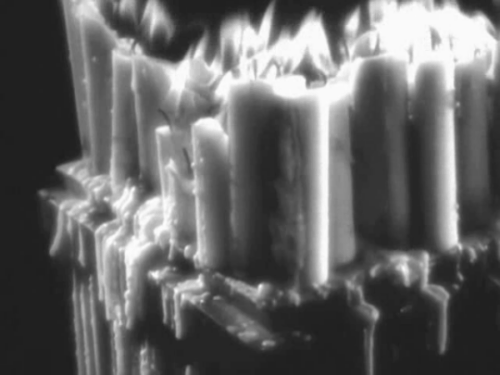THE FIRE | The discovery that represented a revolution to the human life
In the PRE-HISTORY the primitive man obtained fire by the manifestation of nature! It was necessary that the lightening hit the trees and, this way, the FIRE was generated!
These are the evidences of the discovery of fire by the human beings. Some of them, however, saw the fire as a blessing and others as a curse.

The dominance of fire
During the Neolithic period, the man developed techniques to obtain the fire, by using stones and the agriculture. He produced tools and raised animals for consumption. This way, he began being more independent and the evolution brought new horizons to the mankind.
With the fire, the night was not as dangerous and the man had less need to hide himself or to fight. One believes that with the discovery, the man’s evolution was directly influenced, as it permitted him to have more time to think.
The Use of fire as lighting
Until the 19th century the fire was used as the main means of lighting, using whale oil and other materials to maintain public lamp posts and gas lamps lighted.

The Use of fire as lighting
The first fuel used as a source of energy to feed the fire was the animal grease. From the grease that drained from the animals that were baked over embers, the primitive human beings began to see that the fire increased as the grease was drained.
After he has noticed the treasure that he had in his hands, the man look for ways to store it and so he began to use a number of recipients to store the grease, such as animals horns, marine shells and stones that had natural cavities and emerged a vegetable braid that became the fuel conductor. These artifacts were known as lucernes, or small lights, and were used during thousand years as a lighting device.
With its evolution, the man began to notice that the clay which remained around the fire became hard and, with the time, he began to mold the clay and to create a number of other artifacts, such as clay lucernes, which would replace the heavy stone lucernes.


After the domination of metals the man produced metallic lucernes which, with the time, were being improved and inspired the creation of candles.
Another very used lighting device was the torch. It was a way to transport the lighting and the fire and was mainly used in public areas. The most curious fact is that the man, even with no means to study, discovered that the higher the torch was placed, the larger was the lighting area. Thus he had the idea of the candlestick.
Candelabra, derived from the candlesticks, were used with supports to hang the lucernes and to place cups with wax. With the discovery of a new art, the man produced the lanterns, which could direct the light.

During years, other artifacts were created to store the fire. Others were invented, but no revolutionary invention. Until 11783, when the Swiss Pierre Argand developed the double air current lamp.
The so called Argand’s lamp was formed by a wick inserted inside a glass chimney, through where an ascendant air current passed to help the combustion, producing a stable flame, with a strong intensity and little fumes. It was a fuel lamp.
In 1792, William Murdoch, a Scottish engineer stored in a …. The gas obtained by the distillation of fossil coal, which enabled him to light his house and his plant in Redruth. This lighting way was used as a public illumination.
Since then, the lighting has a great deal of evolution.














